Related Research Articles
Anthony Ruthven Gethryn is a character depicted in novels by Philip MacDonald and their cinematic counterparts.
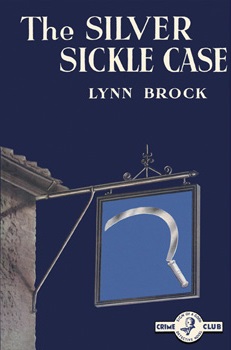
The Silver Sickle Case is a 1938 detective novel by the Irish-born writer Lynn Brock. Best known for his Colonel Gore series of mysteries, the novel introduced an alternative detective character Sergeant Venn of Scotland Yard assisted by Detective Constable Kither. It was followed by two sequels.
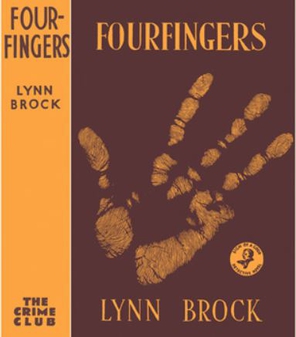
Fourfingers is a 1939 mystery detective novel by the Irish-born writer Lynn Brock. It was the second in his trilogy featuring the characters of Scotland Yard detective Sergeant Venn and Constable Kither. Writing in the Times Literary Supplement, reviewer Maurice Percy Ashley observed "Mr. Lynn Brock’s new book, Fourfingers, good though it is, is so closely written and so full of incident that it is a little heavy going for the reader in search of intellectual relaxation."

Death Came Softly is a 1943 detective story by E.C.R. Lorac, the pen name of the British writer Edith Caroline Rivett. It was the twenty third entry in her long-running series featuring Chief Inspector MacDonald of Scotland Yard.
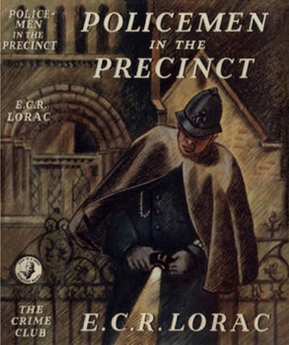
Policemen in the Precinct is a 1949 detective story by E.C.R. Lorac, the pen name of the British writer Edith Caroline Rivett. It was the thirty third entry in her long-running series featuring Chief Inspector MacDonald of Scotland Yard. It was published in the United States by Doubleday using the alternative title And Then Put Out the Light.
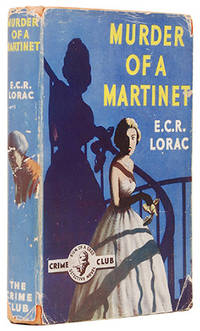
Murder of a Martinet is a 1951 detective novel by E.C.R. Lorac, the pen name of the British writer Edith Caroline Rivett. It is the thirty fifth in her long-running series featuring Chief Inspector MacDonald of Scotland Yard. It was published in the United States by Doubleday under the alternative title of I Could Murder Her.
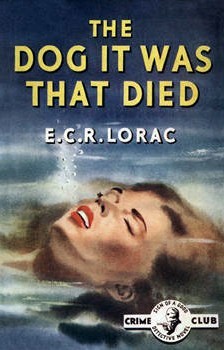
The Dog It Was That Died is a 1952 detective novel by E.C.R. Lorac, the pen name of the British writer Edith Caroline Rivett. It is the thirty sixth in her long-running series featuring Chief Inspector MacDonald of Scotland Yard, one of the more conventional detectives of the Golden Age of Detective Fiction. It was published by the Collins Crime Club.
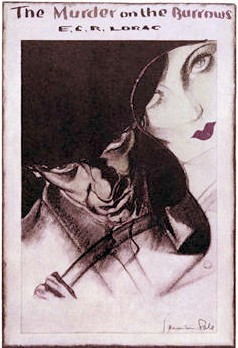
The Murder on the Burrows is a 1931 detective story by E.C.R. Lorac, the pen name of the British writer Edith Caroline Rivett. Her debut novel, it introduced the character of Chief Inspector MacDonald of Scotland Yard who went on to appear in a lengthy series of novels during the Golden Age of Detective Fiction. Although initially named James this is changed to Robert in later books. It takes place around Bideford Bay in North Devon where the author had spent several holidays.

The Sixteenth Stair is a 1942 detective novel by E.C.R. Lorac, the pen name of the British writer Edith Caroline Rivett. It is the twenty second in her long-running series featuring Chief Inspector MacDonald of Scotland Yard, a Golden Age detective who relies on standard police procedure to solve his cases.
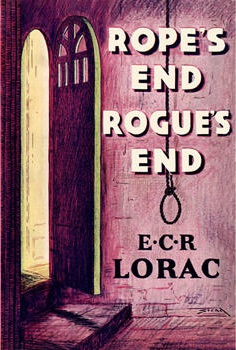
Rope's End, Rogue's End is a 1942 detective novel by E.C.R. Lorac, the pen name of the British writer Edith Caroline Rivett. It is the twenty first in her long-running series featuring Chief Inspector MacDonald of Scotland Yard, a Golden Age detective who relies on standard police procedure to solve his cases. It takes the form of the country house mystery, popular during the era.
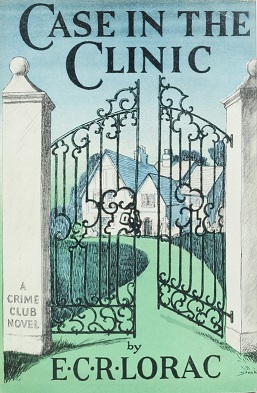
Case in the Clinic is a 1941 detective novel by E.C.R. Lorac, the pen name of the British writer Edith Caroline Rivett. It is the twentieth in her long-running series featuring Chief Inspector MacDonald of Scotland Yard, a Golden Age detective who relies on standard police procedure to solve his cases.
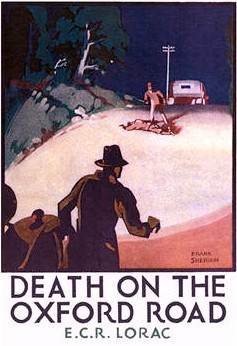
Death on the Oxford Road is a 1933 detective novel by E.C.R. Lorac, the pen name of the British writer Edith Caroline Rivett. It is the fifth book featuring Chief Inspector MacDonald of Scotland Yard who appeared in a lengthy series of novels during the Golden Age of Detective Fiction.
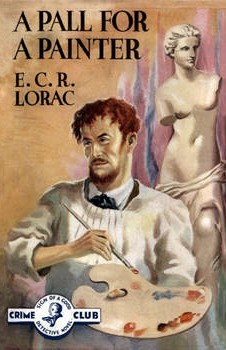
A Pall for a Painter is a 1936 detective novel by E.C.R. Lorac, the pen name of the British writer Edith Caroline Rivett. It is the tenth in her long-running series featuring Chief Inspector MacDonald of Scotland Yard, a Golden Age detective who relies on standard police procedure to solve his cases.
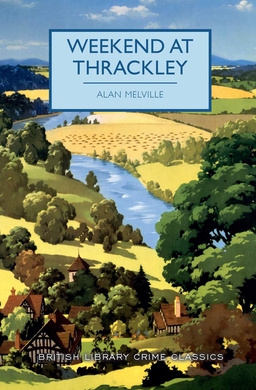
Weekend at Thrackley is a 1934 detective novel by the British writer Alan Melville. A whodunit with comic overtones, it takes the form of a country house mystery, a genre at its height during the decade. His debut novel, it was a commercial success and led to him giving up his job in the timber trade to become a full-time writer. It was reissued in 2018 by the British Library Publishing, as part of a group of crime novels from the Golden Age of Detective Fiction.

The Case of Colonel Marchand is a 1933 detective novel by E.C.R. Lorac, the pen name of the British writer Edith Caroline Rivett. It is the fourth book featuring Chief Inspector MacDonald of Scotland Yard who appeared in a lengthy series of novels during the Golden Age of Detective Fiction.

Relative to Poison is a 1947 detective novel by E.C.R. Lorac, the pen name of the British writer Edith Caroline Rivett. It is the twenty ninth in her long-running series featuring Chief Inspector MacDonald of Scotland Yard, one of the detectives of the Golden Age of Detective Fiction who relies on standard police procedure to solve his cases.

The Lake District Murder is a 1935 detective novel by the British writer John Bude. It is the first in a series of novels featuring Chief Inspector Meredith, promoted at the end of case to Superintendent. Set in the Lake District of Northern England, it shows the influence of Freeman Wills Crofts's Inspector French novels by featuring a detective who methodically breaks down the alibis of his suspects. In 2014 it was reissued by the British Library Publishing as part of a group of republished crime novels from the Golden Age of Detective Fiction.

Nightmare is a 1932 thriller novel by the Irish-born writer Lynn Brock. It is an inverted detective story, and a stand alone work for an author best known for his series featuring the Golden Age detective Colonel Gore.

The House Opposite is a 1931 mystery crime novel by the British writer Joseph Jefferson Farjeon. It was the second in his series of novels featuring Detective Ben, following the 1926 novel Number 17. It was published by the Collins Crime Club which had been established the previous year.

Trouble A-Brewing is a 1946 detective novel by the British writer John Bude. Written during the Golden Age of Detective Fiction, it is part of his series featuring Detective Inspector Meredith.
References
- ↑ Mesplède, Claude, ed. (2007). Dictionnaire des littératures policières[Dictionary of Detective Literature]. Temps noir (in French). Vol. 1: A-I. Nantes: Joseph K. p. 1011. ISBN 978-2-910686-44-4. OCLC 315873251.
- ↑ "Criminals at Large" . The New York Times . May 19, 1968. p. BR32. ProQuest 118205999 . Retrieved August 20, 2024.
The name of Anthony Boucher has been synonymous with the Criminals at Large column, which he began conducting with perception and personality in 1951. Mr. Boucher died on April 29. This week's column is contributed by Allen J. Hubin, editor of The Armchair Detective.
- ↑ "[ title missing ]". Star Tribune . July 2, 1972. p. 51.
- ↑ "[ title missing ]". Star Tribune . May 21, 1978. p. 80.
- ↑ Hagen, Ordean A. (1969). Who Done It?: A Guide to Detective, Mystery and Suspense Fiction. New York: R. R. Bowker. ISBN 978-0-8352-0234-3. Trove 21139554.
- ↑ Hubin, Allen J. (1979). The Bibliography of Crime Fiction, 1749–1975: Listing of All Mystery, Detective, Suspense, Police, and Gothic Fiction in Book Form Published in the English Language. [San Diego]: University Extension, University of California, San Diego. ISBN 978-0-89163-048-7.
- ↑ Hubin, Allen J. (1984). Crime Fiction, 1749–1980: A Comprehensive Bibliography. New York: Garland Publishing. ISBN 0-8240-9219-8. OCLC 10020616.
- ↑ Hubin, Allen J., ed. (1971). Best of the Best Detective Stories: 25th Anniversary Collection. New York: E. P. Dutton & Co., Inc. ISBN 978-0-525-06450-3.
- ↑ Hubin, Allen J. (1981). The Armchair Detective. Madison, Indiana: Brownstone Books. ISBN 978-0-941028-00-4.